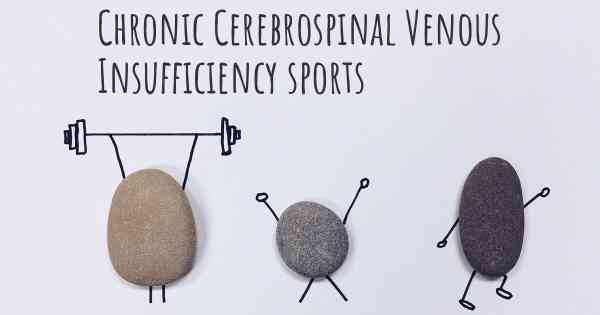Is it advisable to do exercise when affected by Chronic Cerebrospinal Venous Insufficiency? Which activities would you suggest and how intense should they be?
See if it is advisable for people with Chronic Cerebrospinal Venous Insufficiency to practice sports and which ones are the most recommended if you have Chronic Cerebrospinal Venous Insufficiency

Exercise and Chronic Cerebrospinal Venous Insufficiency (CCSVI)
Chronic Cerebrospinal Venous Insufficiency (CCSVI) is a condition characterized by impaired blood flow from the brain and spinal cord due to narrowed or blocked veins. It is commonly associated with multiple sclerosis (MS) but can also occur independently. CCSVI can lead to various symptoms such as fatigue, pain, and mobility issues.
When it comes to exercise and CCSVI, it is important to approach physical activity with caution. While exercise can have numerous benefits for overall health and well-being, it is crucial to consider the individual's specific condition and limitations. Consulting with a healthcare professional, such as a neurologist or physical therapist, is highly recommended before starting any exercise program.
The Benefits of Exercise
Engaging in regular exercise can provide several benefits for individuals with CCSVI:
- Improved cardiovascular health: Exercise can enhance blood circulation, which may help alleviate some of the symptoms associated with CCSVI.
- Increased muscle strength and flexibility: Strengthening exercises can improve muscle tone and flexibility, potentially enhancing mobility and reducing the risk of falls.
- Enhanced mood and mental well-being: Physical activity releases endorphins, which can boost mood and reduce stress, anxiety, and depression.
- Weight management: Regular exercise, combined with a healthy diet, can help maintain a healthy weight, reducing the strain on the cardiovascular system.
Recommended Exercises for CCSVI
When it comes to choosing exercises for individuals with CCSVI, it is important to focus on activities that are low-impact, gentle on the joints, and do not exacerbate symptoms. Here are some exercises that may be beneficial:
- Walking: Walking is a low-impact exercise that can be easily modified to suit individual fitness levels. Start with shorter distances and gradually increase the duration and intensity. Walking outdoors can also provide additional benefits, such as exposure to natural sunlight and fresh air.
- Swimming: Swimming and water aerobics are excellent options for individuals with CCSVI as they provide resistance without putting stress on the joints. The buoyancy of water can also help support the body, making movements easier and reducing the risk of falls.
- Cycling: Stationary cycling or using a recumbent bike can be a safe and effective way to improve cardiovascular fitness and leg strength. It is important to adjust the resistance and duration according to individual capabilities.
- Yoga and Pilates: These mind-body exercises focus on gentle stretching, balance, and core strength. Modified poses and exercises can be tailored to accommodate individual needs and limitations.
- Tai Chi: Tai Chi is a low-impact exercise that combines slow, flowing movements with deep breathing and meditation. It can improve balance, flexibility, and overall well-being.
Exercise Intensity and Safety Precautions
When it comes to exercise intensity, it is crucial to start slowly and gradually increase the duration and intensity of the activities. This allows the body to adapt and reduces the risk of overexertion or injury. Listening to the body and respecting its limits is essential.
Here are some additional safety precautions to consider:
- Warm-up and cool-down: Always begin with a gentle warm-up to prepare the body for exercise and end with a cool-down to gradually decrease heart rate and prevent muscle stiffness.
- Stay hydrated: Drink plenty of water before, during, and after exercise to prevent dehydration.
- Use assistive devices if needed: Depending on individual mobility and balance, using assistive devices such as canes or walkers may be necessary to ensure safety during exercise.
- Modify exercises as necessary: If certain movements or positions cause discomfort or exacerbate symptoms, modify or avoid them. It is important to listen to the body and adapt accordingly.
- Monitor symptoms: Pay attention to any changes in symptoms during or after exercise. If symptoms worsen or persist, it is important to consult with a healthcare professional.
Conclusion
Engaging in regular exercise can be beneficial for individuals with Chronic Cerebrospinal Venous Insufficiency (CCSVI). However, it is crucial to approach exercise with caution and consult with a healthcare professional before starting any exercise program. Low-impact activities such as walking, swimming, cycling, yoga, and Tai Chi can be suitable options. It is important to start slowly, gradually increase intensity, and listen to the body's limits. By incorporating exercise into a well-rounded treatment plan, individuals with CCSVI can potentially improve their overall health, well-being, and quality of life.








